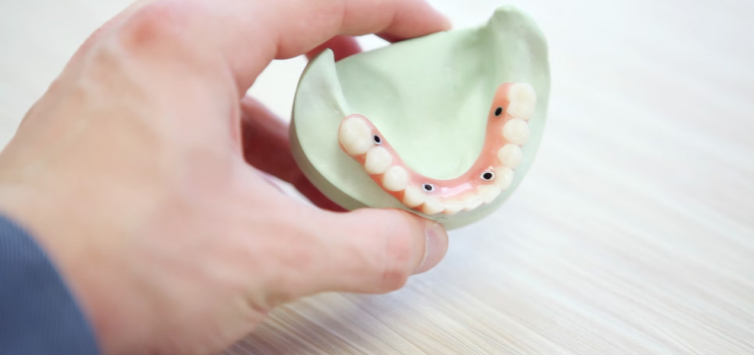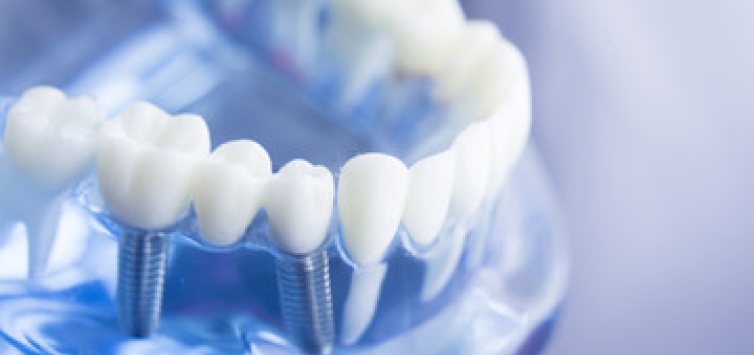Blog
Expert insights for your well-being journey. Your health is our priority.
What Is the Difference Between Cosmetic Dentistry and Dental Implants
A dazzling smile is a powerful asset, boosting confidence and making a lasting impression. When it comes to achieving a picture-perfect grin, two dental approaches stand out: cosmetic dentistry and dental implants. While both significantly improve your smile, they address distinct needs. In this blog post, we’ll break down the key differences between cosmetic dentistry and dental implants to help you decide which treatment is right for you.

Cosmetic Dentistry: Enhancing the Aesthetics of Your Smile
Cosmetic dentistry focuses on the visual aspects of your smile and includes dental work that improves the appearance of teeth, gums, and/or bite. It is used to give a makeover to your dental aesthetics in terms of size, shape, color, position, and alignment. Here are some common procedures offered:

- Teeth Whitening: It is a popular choice for brightening a dull or discolored smile. There are various whitening options available, including in-office treatments performed by your dentist for a dramatic boost in brightness, and at-home whitening kits that provide a gradual lightening effect.
- Veneers: These are thin shells of porcelain or composite resin custom-made to match the color and appearance of your surrounding teeth. Veneers are bonded to the front surface of your teeth to address chips, cracks, discoloration, or even minor misalignment, creating a flawless and uniform look.
- Dental Bonding: This procedure utilizes a tooth-colored resin material that is sculpted and hardened with a special light to repair minor imperfections. Dental bonding is a versatile treatment that can fix chipped or cracked teeth, close small gaps between teeth, and even alter the shape of slightly misaligned teeth for a more symmetrical smile.
- Reshaping Teeth (Enamel Contouring): This minimally invasive technique involves gently buffing or reshaping the enamel of your teeth to improve their size or symmetry. Enamel contouring can address minor chips, cracks, or uneven tooth length, creating a more balanced and aesthetically pleasing smile.
- Gum Contouring: This procedure refines the gum line for a more balanced and aesthetically pleasing smile. It can be performed with lasers or surgical techniques to address excessive gum tissue exposure, creating a more proportional appearance between your teeth and gums.
Benefits of Cosmetic Dentistry
Cosmetic dentistry can significantly enhance your smile’s aesthetics, leading to several positive outcomes:
- Improved Confidence: A brighter, straighter smile can significantly boost your confidence and self-esteem. When you feel good about your smile, you’re more likely to share it with the world through genuine laughter and uninhibited social interactions. This newfound confidence can empower you in both personal and professional settings.
- Brighter and Straighter-Looking Teeth: Say goodbye to yellowing or misaligned teeth and hello to a radiant, even smile. Cosmetic dentistry can address a variety of concerns, revealing a smile that is not only aesthetically pleasing but also contributes to a more youthful look. Whiter teeth and a balanced smile can draw attention away from any fine lines or wrinkles, creating a more overall rejuvenated appearance.
- Better Oral Health: While primarily focused on aesthetics, some cosmetic dentistry procedures can indirectly improve your oral health. For instance, correcting misalignment or closing gaps between teeth can make it easier to maintain proper oral hygiene, reducing the risk of cavities and gum disease.
Dental Implants: Restoring Function and Beauty
Dental implants are a revolutionary solution for missing teeth. They are small, screw-like posts surgically inserted into the jawbone to act as artificial tooth roots. These help support the crown and maintain the tooth bone at the lost tooth site. Here’s a simplified explanation of the procedure:

- A tiny screw is placed into your jawbone.
- Once the jawbone heals and integrates with the screw (implant), an abutment (connector piece) is attached.
- Finally, a custom-made crown is placed on the abutment, replicating the look and function of a natural tooth.
Benefits of Dental Implants
Dental implants can significantly improve the oral health and quality of life of the person who needs them. Here are some of its key advantages:
- Restores Chewing Function: Chewing requires a complete set of teeth working together to properly break down food. Missing teeth can disrupt this process, making it challenging to chew certain foods effectively. Dental implants function like natural teeth, allowing you to regain full chewing ability. This means you can enjoy a wider variety of foods with confidence, from crunchy vegetables to chewy nuts.
- Improves Speech: Speech relies on the proper interaction between your tongue and teeth. Missing teeth can create gaps that alter how your tongue forms sound, leading to slurring or difficulty pronouncing certain consonants. Dental implants fill these gaps and provide a stable foundation for your tongue. This improved stability allows for clearer and more precise speech.
- Prevents Bone Loss in the Jaw: When a tooth is missing, the jawbone doesn’t receive the stimulation it needs to maintain its density. Over time, this can lead to bone loss in the jaw, which can alter your facial structure and even contribute to loose dentures. Dental implants act like artificial tooth roots when placed in the jawbone to stimulate bone growth and prevent this deterioration. This helps maintain a healthy jawbone and a natural-looking facial structure.
- Long-Term, Natural-Looking Solution: Unlike dentures or bridges, which may require adjustments or replacements over time, dental implants are a permanent solution. They are made from biocompatible materials like titanium and are incredibly strong and durable. With proper care, they can last a lifetime. Additionally, dental implants are designed to mimic the look and feel of natural teeth. The custom-made crowns placed on top of the implants blend seamlessly with your existing teeth, providing a natural-looking and aesthetically pleasing smile.
Key Differences Between Cosmetic Dentistry and Dental Implants
Now that you understand the basics and benefits of both treatments, let’s explore their key differences:
| Feature | Cosmetic Dentistry | Dental Implants |
| Focus | Appearance | Function and Health |
| Procedures | Non-invasive | Surgical |
| Cost | Generally Less Expensive | More Expensive |
| Longevity | Requires Touch-ups | Permanent Solution |
Key Takeaway
While both cosmetic dentistry and dental implants can dramatically improve your smile, they differ in their purpose. Cosmetic dentistry offers a variety of treatments to enhance the appearance of your teeth, addressing concerns like chips, discoloration, or minor misalignment. Dental implants, on the other hand, provide a more comprehensive solution. They replace missing teeth, restoring both functionality and a natural look.
Ultimately, the best choice depends on your individual goals and dental health. A consultation with a qualified dentist is key to determining the most suitable treatment plan.